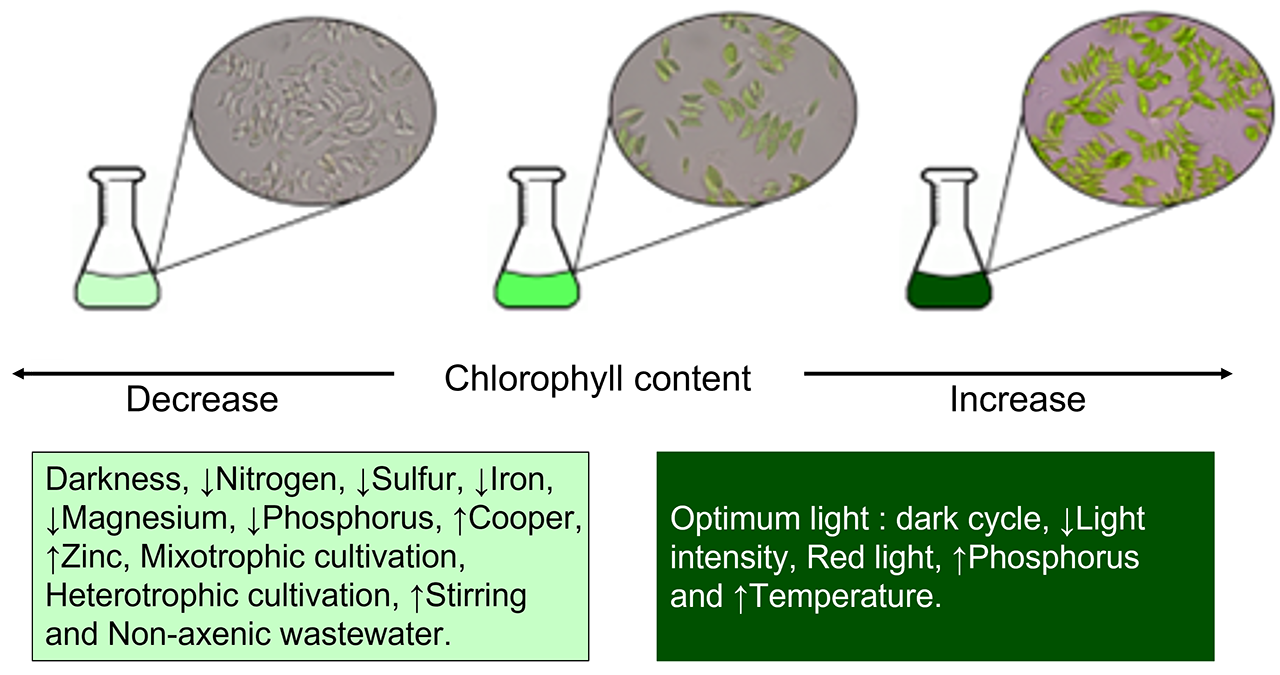Algal Pigment Content Analysis Service
Algal pigments, which mainly include chlorophyll and multiple carotenoids, have important physiological functions in algal cells and have commercial potential.
Lifeasible is able to provide professional algal pigment content analysis services which is an important indicator of algal status and algal strain screening.
Introduction to Algal Pigments
Algal pigments, such as chlorophylls and carotenoids, play an important role in algal physiological processes. The important physiological functions of algal pigments in photosynthesis, especially in relieving excess photosynthetic energy, have been recognized. Moreover, the commercial potential of each of these primary and auxiliary photosynthetic pigments has been increasingly known.
| Chlorophylls in Algae | Carotenoids in Algae |
|---|---|
| The main function of chlorophylls is to convert light energy into chemical energy, which closely affects the growth and survival of microalgae. The green color of chlorophyll has long been used as a natural colorant, and chlorophylls and chlorophylls have been shown to act as antioxidants and anti-inflammatory agents to prevent chronic diseases and cancer. | Carotenoids not only support photosynthesis as accessory pigments but also protect organelles from reactive oxygen species (ROS) at high light intensities by dissipating excess light energy as heat through the luteinizing cycle. The major carotenoids from microalgae of high commercial interest are beta-carotene, lutein, and astaxanthin, and the carotenoid market is growing by leaps and bounds. |
Effect of Culture Conditions on the Pigment Content of Algae
The pigments produced by microalgae can be regulated by changing the culture conditions, depending not only on the species but also on the culture mode. The culture conditions that can be regulated include light, temperature, pH, and nutrients such as carbon, nitrogen, phosphorus, and trace elements.
 Fig.1 Schematic summary showing the culture conditions affecting chlorophyll accumulation in Scenedesmus dimorphus. (da Silva Ferreira, V., & Sant’Anna, C., 2017, World Journal of Microbiology and Biotechnology)
Fig.1 Schematic summary showing the culture conditions affecting chlorophyll accumulation in Scenedesmus dimorphus. (da Silva Ferreira, V., & Sant’Anna, C., 2017, World Journal of Microbiology and Biotechnology)
In addition, the use of treated and untreated industrial and municipal residential wastewater and poultry litter extracts in the cultivation of microalgae is encouraged because the wastewater is rich in nutrients and generates billions of liters per year from residential and industrial. These non-sterile conditions can also have an impact on the pigment content of algae.
Our Services
As carriers of algal photosynthesis, algal pigments can be used to characterize the state of the algae and as one of the parameters for the screening of algal strains. Lifeasible is able to provide professional services to help our customers to detect and analyze the content of algal pigments.
- HPLC-Based Algal Pigment Detection
After sample preparation, the algal pigments are analyzed using a high-performance liquid chromatography (HPLC) system. Neoxanthin, violaxanthin, luteolin, chlorophyll a, and chlorophyll b, as well as β-carotene, are used as standard reagents in the analysis. - Statistical Analysis
The chromatographic peaks of the detected pigments are compared with those of the corresponding standards. All experiments are performed in triplicate and one-way analysis of variance (ANOVA) and subsequent t-test are performed.
Project Workflow

Why Choose Us

With advanced equipment, experienced research teams, as well as professional data analysis specialists, Lifeasible is capable to provide professional, rapid, and reliable algal pigment content analysis services for clients worldwide. Please contact us for more information.
Reference
- da Silva Ferreira, V., & Sant’Anna, C. (2017). Impact of culture conditions on the chlorophyll content of microalgae for biotechnological applications. World Journal of Microbiology and Biotechnology, 33(1), 1-8.
Our services are for research use only and not for any clinical use.